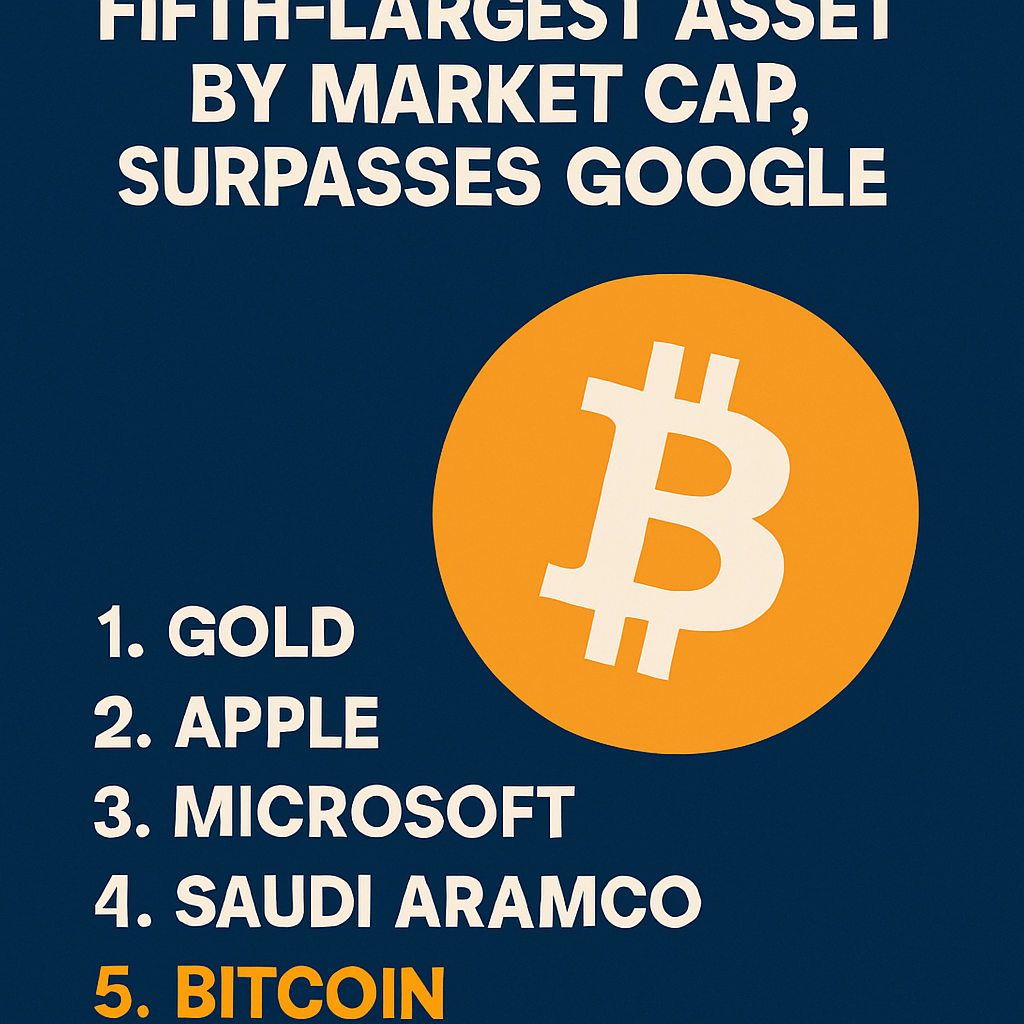Record Market Capitalization
In early Asia trading on August 14, 2025, Bitcoin’s market cap climbed above $2.46 trillion, exceeding Google parent Alphabet’s $2.4 trillion valuation. The milestone positions Bitcoin as the fifth-largest asset globally, ahead of major technology and commodities benchmarks. This shift reflects a year-long accumulation trend among institutional and corporate treasury managers.
Drivers of the Rally
A combination of macroeconomic data and regulatory developments fueled the rally. U.S. Consumer Price Index releases aligned with forecasts, reinforcing bets on a Federal Reserve interest rate cut in September. Equity markets responded positively, pushing the S&P 500 to record highs and creating a risk-on environment that benefited Bitcoin. Additional support came from ongoing inflows into spot Bitcoin ETFs, which reported net purchases totaling $65.9 million on Tuesday.
Corporate Adoption Trends
Corporations have increasingly embraced Bitcoin as a reserve asset, following the strategy pioneered by major public companies. Entities such as MicroStrategy and Tesla expanded Bitcoin holdings, while smaller firms launched treasury frameworks for direct allocation. Data sourced from CompaniesMarketCap shows a growing number of public companies listing Bitcoin on balance sheets, signaling diversification away from traditional cash reserves.
Technical Outlook
Technical analysts point to a consolidation zone between $122,500 and $124,000, with potential upside targets near $135,000–$138,000. Indicators such as the 20-day exponential moving average and relative strength index suggest that momentum remains bullish. Short-term resistance sits at the $125,000 mark, where liquidation clusters could trigger volatility spikes.
Broader Market Impact
The ascent to a top-five global asset has implications for financial markets and investor portfolios. Bitcoin’s correlation with risk assets has strengthened, with capital flows cascading between equities and digital assets. Fund managers and pension funds are now evaluating allocations to Bitcoin as a hedge against inflation and currency debasement, akin to gold and other store-of-value instruments.
Regulatory Context
Under the current administration, digital asset regulations have taken a more welcoming stance. Executive orders and legislative proposals aim to clarify the legal framework for digital currencies, reducing uncertainty and unlocking institutional channels. The combination of regulatory clarity and federal-level endorsements has helped legitimize Bitcoin as a mainstream asset class.
Investor Considerations
Market participants should monitor macroeconomic indicators, ETF flows, and on-chain metrics for insights into potential trend shifts. Risk management strategies, including stop-loss orders and position sizing, remain critical amid heightened volatility. As Bitcoin’s market footprint expands, traditional portfolio construction models may integrate digital asset allocations to balance risk and return objectives.

Comments (0)